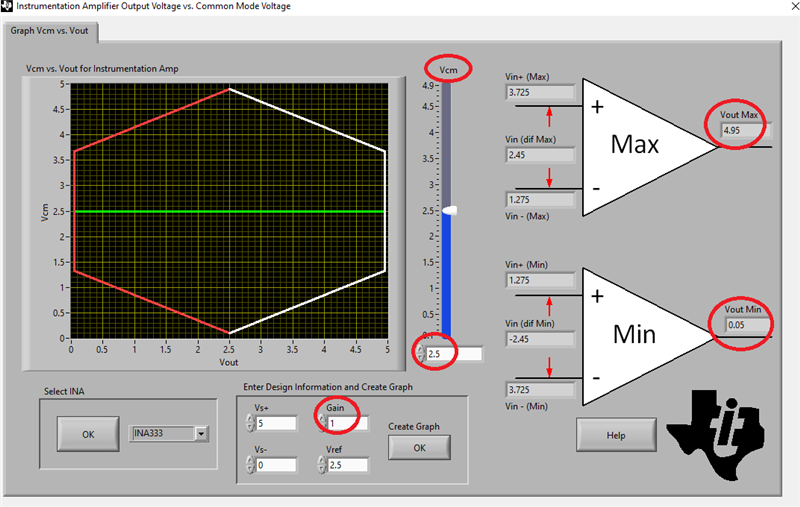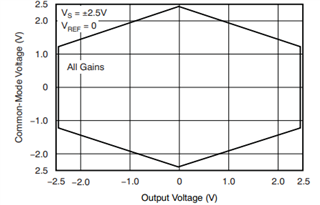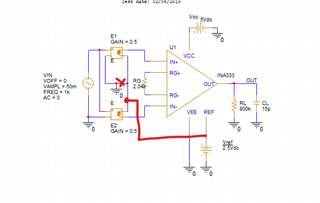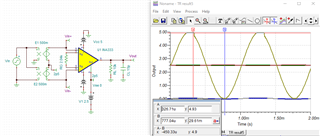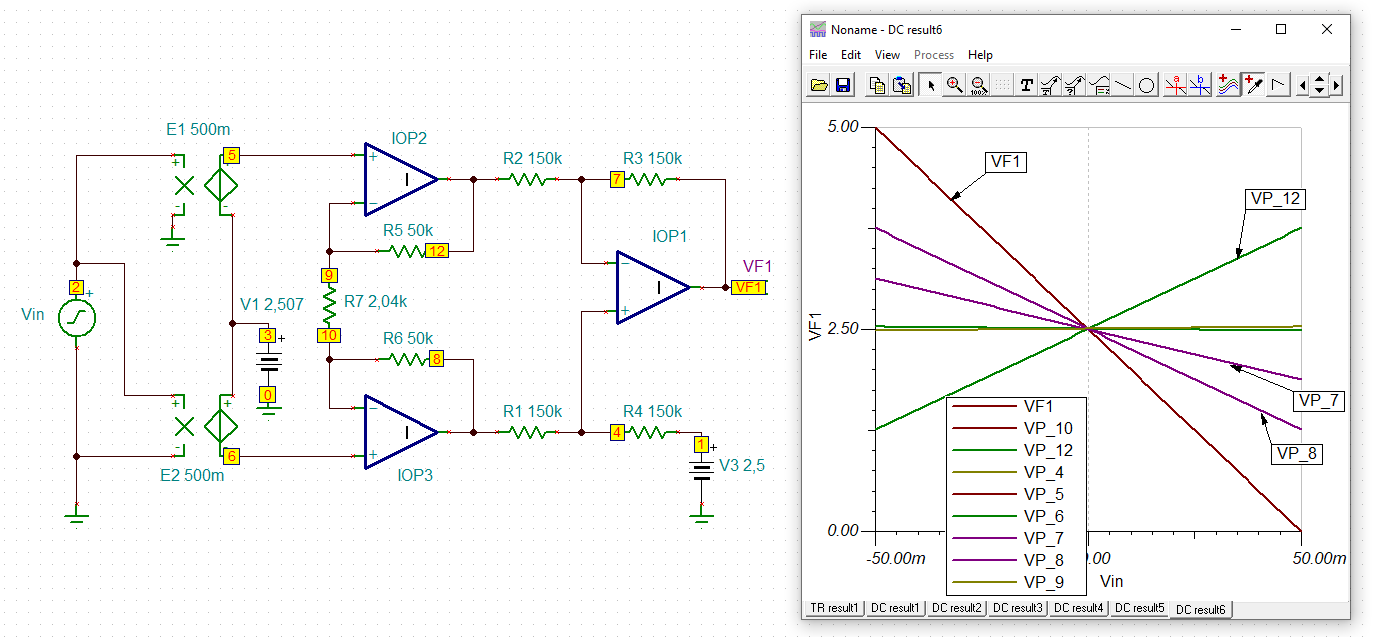Hello,
I am looking at the Analog Engineer's Calculator with my customer on the INA Vcm vs Vout tab for the INA333 as the selected component. The outputs are limited to 4.7V max and - 0.3V min with 5V V+ and 0V V- with a 2.5V reference. But when I look at the datasheet it says the output is:

Am I missing something?
John


